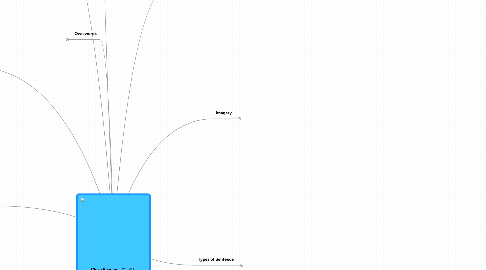
1. Identify the Correct Tone
1.1. Tongue in Cheek
1.1.1. Form of Irony
1.1.2. Writer Sounds Serious
1.1.3. There is a form of ridicule behind the euphemism
1.2. Matter of Fact
1.2.1. No Emotion in the Writers Voice
1.3. Serious Tone
1.3.1. Formal Words
1.4. Irony
1.4.1. Humour
1.4.2. Often a Serious Purpose
1.4.3. Author says opposite of what they really mean
1.5. Enthusiastic
1.5.1. A list of superlatives
1.5.2. Used in Enthusiastic
1.6. Flippant
1.6.1. Author shows lack of respect
1.6.2. Through use of colloquial language
1.6.3. Normally a very serious subject
1.7. Humorous
1.7.1. The writer is just trying to be funny
1.7.2. Difficult to spot in exam conditions
1.8. New node
1.9. Serious
1.9.1. Very formal e.g.. funeral speech
1.10. Light-Heartedness
1.10.1. Informal/conservational language
1.10.2. Where author finds the topic funny
1.10.3. Humorous in a straight forward way
2. Link Questions
2.1. Normally already Identified
2.2. At higher could be whole paragraph
2.3. How to
2.3.1. Evaluate last paragraph
2.3.2. Quote the expression linking back
2.3.3. Explain Link
2.3.4. Evaluate next paraqraph
2.3.5. Quote the expression referring forward
2.3.6. Explain link :)
3. Formal and Informal Language
3.1. Informal
3.1.1. Possible Repetition
3.1.2. Possible Digression
3.1.3. Possible Hyperbole
3.1.4. Chatty
3.1.5. May Involve Feelings
3.1.6. Personal Approach
3.1.7. Usually Spoken
3.1.8. Conversational
3.1.9. Colloquial
3.1.10. Shortened Form of Words
3.1.11. Lose Sentence Structure
3.1.12. Everyday Words
3.2. Formal
3.2.1. Used in Official Documents
3.2.2. Grammatically Correct
3.2.3. Proper Formal Sentences
3.2.4. No Abbreviations
3.2.5. Factual
3.2.6. Objective
3.2.7. Complex Words
3.2.8. Impersonal
3.2.9. Unbiased
4. Question Types
4.1. Context Questions
4.1.1. Marks indicates the amount of info required
4.1.2. Put in own words
4.1.2.1. Don't quote
4.1.3. Do you Understand the Passage?
4.1.4. Explain the meaning of the word
4.1.4.1. Quote the word that brought you to that conclusion
4.1.4.1.1. Explain how it helped you
4.2. Question types- Wording
4.2.1. Comment on the sentence structure of...
4.2.2. Show how the punctuation...
4.2.3. Comment on the word choice/language...
4.2.4. Explain how the punctuation
4.2.5. Comment on the effectiveness...
4.2.6. Comment on the tone of...
4.2.7. Comment on the language
4.2.8. Explain how effective you find the metaphor...
5. Tone
5.1. Register
5.1.1. Using Language Appropriate to the Situation
5.2. Other Contributors to Tone
5.2.1. Exaggeration
5.2.2. Imagery
5.2.3. Word Choice
5.3. Structure
5.3.1. Can Make You Laugh
5.3.2. Makes You think Again
5.3.3. Oxymoron/Juxtaposition
5.3.4. 2 Words or Concepts Deliberately Next to Each Other Seem to be Some Way Opposed to Each Other
5.4. Point of View
5.4.1. For/Against?Neutral
5.4.2. The Angle the Writer takes on the piece
5.5. Sound
5.5.1. Don't just Identify the Technique comment on how it affects the Tone
5.5.2. Alliteration
5.5.3. Rhyme
5.5.4. Repition
6. Own words
6.1. Checking your understanding
6.2. Keep the general idea there
6.3. do not quote
6.4. figures of speech -> simple english
6.5. not necessary to change every word
7. Sentence Structure
7.1. Pattern
7.1.1. Long/Short Sentences
7.1.1.1. Build Tension
7.1.1.2. Could Be Incomplete
7.1.1.3. For Impact
7.1.1.4. Show Impact of Something By Long List
7.2. Antithesis
7.2.1. Can Have an Impact For Humorous Effect
7.2.2. Suited to Poetry
7.2.3. Balancing Opposites Together to Create a Contrast
7.2.4. Journalist Use it in Persuasive Writing
8. Similie
9. Imagery
9.1. Think About
9.1.1. What is being compared to what
9.1.2. In what respects are the two similar
9.1.3. How does the comparison help you visualise the subject
9.1.4. Is it an effective comparison
9.1.4.1. Not is it a "good" comparison
9.2. Types
9.2.1. Personification
9.2.1.1. giving human-like qualities to an inanimate object
9.2.2. Oxymoron
9.2.2.1. condensed paradox
9.2.3. Paradox
9.2.3.1. apparent contradiction
9.2.4. Pathetic Fallacy
9.2.4.1. Weather reflecting the character's thought/feelings
9.2.5. Metaphor
9.3. Steps to take when answering question
9.3.1. Identify the style
9.3.1.1. simile
9.3.1.2. metaphor
9.3.2. Identify the literal meaning
9.3.3. Explain the deeper meaning
9.3.3.1. you must clearly explain the literal and metaphorical meaning
10. Types of Sentence
10.1. Statement
10.1.1. used in factual writing
10.2. A Question
10.2.1. used in reflective/emotive language
10.2.2. Rhetorical Questions
10.2.2.1. Doesn't require an answer
10.2.2.2. Emotive language
10.3. An Exclamation
10.3.1. Put across a tone of amazing, shock or other strong emotion.
10.4. A Command
10.4.1. Used in persuasive writhing an instructions
10.5. Minor Sentence
10.5.1. Grammatically Incomplete
10.5.1.1. Verb is ommited
10.5.2. Used for...
10.5.2.1. Dramatic Effect
10.5.2.2. Impact
10.5.2.3. Suspense
10.5.2.4. Urgency
10.6. Inverted Commas
10.6.1. Slang
10.6.2. Spoken Word
10.6.3. Quotation
10.6.4. Title
10.6.5. Sarcasm
11. Technical Terms
11.1. Cliché
11.1.1. Idiom/figure of speech that's lost it's impact due to over use
11.2. Hyperbole
11.2.1. Exaggeration to emphasise
11.2.2. Satirical
11.2.3. Humorous
11.3. Pun
11.3.1. a play on words that sound alike
11.4. Paradox
11.4.1. Apparently self-contradictory statement
11.5. Oxymoron
11.5.1. 2 words of an opposite meaning brought together
11.6. Euphemism
11.6.1. the substitution of a harsh blunt word for a soft/milder one
11.7. Alliteration
11.7.1. Intensify the sense of the words
11.7.2. using same initial of 2 or more words in close proximity
11.7.3. Adds to the effect
